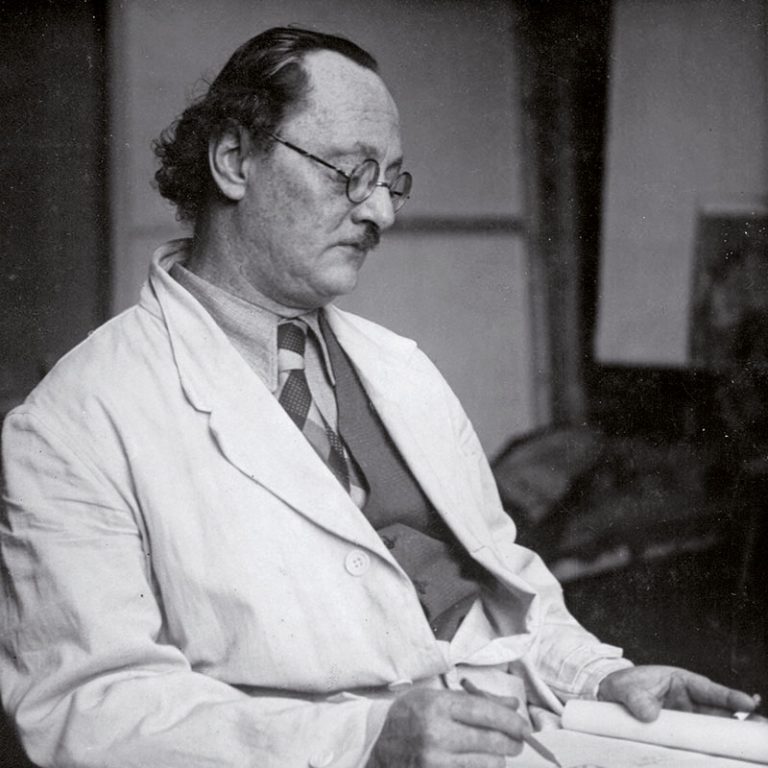Anton KOLIG, Hl Josef
Anton Kolig
(1886 – 1950)
Anton Kolig was born in Neutitschein in Moravia (Nový Jičín) on July 1st, 1886 and was the son of the house- and church painter Ferdinand and his wife Maria. From 1904 to 1906, he studied under Oskar Kokoschka with Anton von Kenner and Erich Mallina at the University of Applied Arts in Vienna. A year later, he began his studies at the Academy of Fine Arts in Vienna under Rudolf Bacher, Heinrich Lefler and Alois Delug and met Sebastian Isepp and Franz Wiegele from Nötsch.
Out of discontent with the outdated, conservative academy classes, Kolig took part in the founding of the “Neukunstgruppe” (New Art Group) in 1909, whose members included Egon Schiele, Anton Faistauer and Albert Paris Gütersloh as well as Franz Wiegele. In 1911, Kolig exhibited nine works at the “Special exhibition for painting and sculpture” in the Zedlitzhalle in Vienna. On February 27th of the same year he married Katharina Wiegele, the sister of his friend Franz Wiegele, in the church of Saak near Nötsch.
In the autumn of 1912, he took a trip to France with his family and his brother-in-law Franz Wiegele, which was made possible by a travel grant, mediated by Carl Moll and Gustav Klimt. In the summer of 1913, Kolig stayed with Wiegele in Ambleteuse near Boulogne-sur-Mer (Artois). In 1914, he went on a trip to the south of France and visited Cassis near Marseille, where he was surprised by the outbreak of the First World War. The Kolig family had to flee France and they were unable to take back with them most of the paintings that he had created while there and they have been lost ever since. They returned to Nötsch via Genoa and Venice.
In April of 1916, Kolig was drafted into the emergency reserve hospital in Klagenfurt for military service, and stayed there until he was assigned to the Italian front in July. Finally, through the mediation of Richard von Schaukal, as a war painter, he was able to join the art association of the Royal Austro-Hungarian Army Press Bureau. After the end of the First World War, Kolig tried to realize his vision of a private art school in Nötsch. Gerhart Frankl, Theodor Herzmansky and Wolfgang von Schaukal were his first students.
In 1928, he received a gold medal for his “Portrait of General Seibt” (1918) at the exhibition “German Art” in Düsseldorf. In the same year, the artist took up a professorship at the Württemberg Academy of Art in Stuttgart and moved with his family to the Swabian capital. On the occasion of the tenth anniversary of the Carinthian Referendum of 1929, he was commissioned by the State of Carinthia to paint murals for a hall in the Klagenfurt “Landhaus”. He fulfilled this order with his Stuttgart students in 1929/30 with Anton Mahringer as his most important employee. In 1936, Kolig was awarded the Austrian State Prize.
Due to the influences of National Socialism, in 1938 the frescoes in the Klagenfurt “Landhaus” were destroyed. Because of ongoing political events, Kolig retired as a professor in 1943 and returned to Nötsch. When a bomb was dropped on Nötsch in 1944, Kolig was buried under rubble with his wife and was seriously injured. Anton Kolig died on 17 May 1950 in Nötsch.




